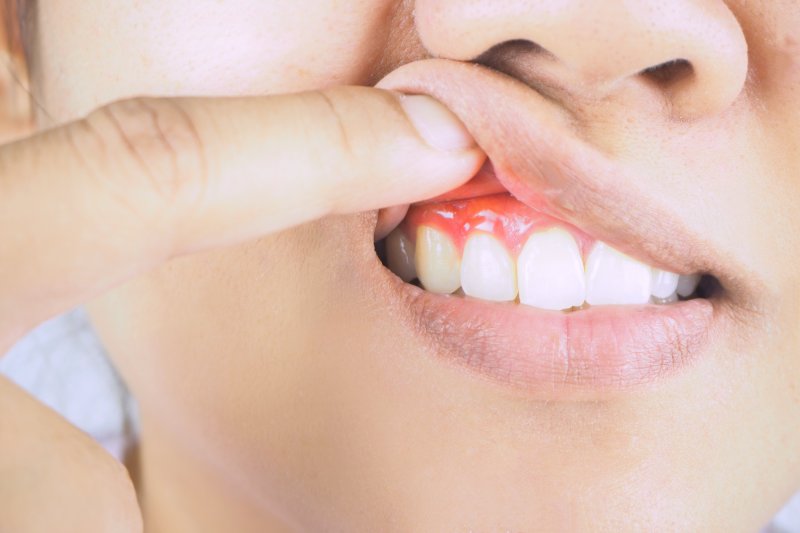
It’s common to receive physical traits from your parents, whether it be eye color, hair color, or many other characteristics. However, this genetic transfer also occurs for certain medical conditions, and they often don’t start to become noticeable until you get older. One example is gum disease, a condition that largely goes unnoticed until it’s already developed. If you have family members who struggle with gum disease, you may find yourself more likely to experience gum infections as well. Keep reading to learn the science, how to recognize the signs you have gum disease, and how to protect yourself going forward.
What’s the Connection Between Gum Disease and Genetics?
According to research on the subject, the more serious forms of gum disease (i.e. periodontitis) are more likely to carry a genetic component. Additional studies have shown that there may even be a genetic link between the human body’s immune response and the development of chronic gum disease.
Researchers frequently point to the specific gene responsible for defending the mouth against harmful oral bacteria known as beta defensin 1. If the body is deficient in this gene, it’s possible that the risk for developing gum disease becomes higher.
The Most Common Symptoms to Know
Routine dental checkups are important to catching the early signs of gum disease when they appear. This is because without a trained eye, you may not even realize you have gum disease as it often develops without any symptoms at all. However, there are certain symptoms you should be made aware of, including the following:
- Chronic bad breath
- Bleeding while brushing or flossing
- Gums that appear red or purple (healthy gums appear light pink)
- Tender or sensitive gums
- Plaque buildup between the gums
- Receding gums (or teeth that appear longer than normal)
How Can You Reduce Your Overall Risk?
Just because genetics can play a role in your long-term oral health doesn’t necessarily mean that you can’t take steps to protect your smile through good habits. By taking the following precautions, you can avoid gum disease for the most part and maintain a healthy smile. The most important steps to take include the following:
- Brush twice a day using fluoridated toothpaste
- Floss at least once a day
- Add an antibacterial, non-alcoholic mouthwash to your routine
- Brush for at least two minutes at a time, making sure to brush along the gum line
- Eat a balanced diet containing fruits and vegetables
- Avoid unhealthy foods high in sugar and starch
- Never brush with too much force (which can cause gum recession)
These helpful tips can make all the difference in your oral health, particularly if you’re aware that gum disease runs in your family. Call a dentist today to ensure your oral health is in good shape and no underlying gum disease is present!
About Pleasant Grove Family Dentistry
Dr. Marracino and Dr. Cockerell are highly experienced in preventive dental treatments designed to keep your mouth healthy for many years to come. In the event you do develop gum disease, they provide multiple solutions to treat it, including scaling and root planing, antibiotic therapy, and soft tissue laser technology. To schedule an appointment, you can contact them through their website.
